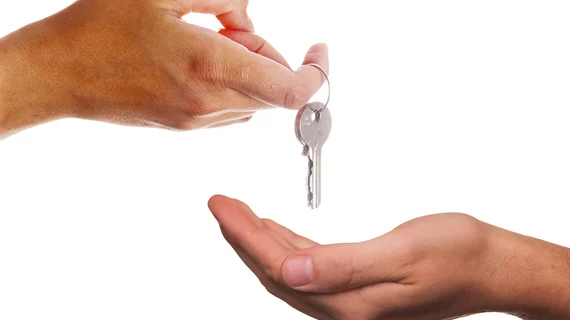How and why to gift radiology residents with ‘ownership’
“Responsibility equals accountability equals ownership. And a sense of ownership is the most powerful weapon a team or organization can have.”
So said the late Pat Summitt (d. 2016), longtime head coach of the University of Tennessee Lady Volunteers basketball team and one of the winningest college basketball coaches in NCAA history.
Applying a similar ethos to medicine in general and radiology residency in particular, two radiology researchers at Indiana University observe:
“[I]f radiology residents fully grasp the importance of their link within the larger chain of quality of care and work hard to ensure that their patients receive the same kind of radiologic care they would want a colleague to provide someone close to them, then they are taking full ownership of their work and patients are likely to benefit.”
The authors of the thought, Peter Gunderman, MD, and Richard Gunderman, MD, PhD, had their say published March 30 in Academic Radiology [1].
Before suggesting strategies for imbuing residents with a stakeholder’s sense of pride in their contributions to patient care, Gunderman and Gunderman note some sticking points program directors are likely to run up against.
Examples of such barriers include faculty reticence to involve residents, contagious not-my-job attitudes and a “shift mentality” in which unfinished work becomes the next shift’s problem as soon as the proverbial whistle blows.
Also vexing are a common lack of comfort with subspecialty work owing to fast moves in and out of imaging modalities and body regions, and the plain fact that residents tend to “move from facility to facility over the course of their training, often not feeling part of the team.”
Turning to solutions, the authors describe three specific steps radiology residency programs can take to cultivate a healthy sense of ownership among residents.
Create and communicate clear expectations about what residents at different levels should do.
It is important not to confine ownership to the final phase of training. Even neophytes can develop their sense of ownership by assuming responsibility for appropriate aspects of patient care. For example, when interpreting advanced imaging examinations such as CT and MRI, first-year residents can be expected to take the time to familiarize themselves with the patient’s medical history and history of the present illness before they review cases with their attending radiologists, and when questions arise in the course of interpretation, they can take responsibility for digging deeper.”
Make ownership a routine part of resident assessment.
In addition to such parameters as how quickly and well residents orient themselves to images, detect key findings and formulate appropriate differential diagnoses, ownership should be a clearly recognized and vital dimension of resident performance. If attending radiologists and program directors never talk about it with residents, no one should be surprised when their sense of ownership is found wanting. Educators need to single it out as a clear learning objective and provide appropriate assessment on a regular basis. For example, at the end of the day, an attending radiologist could say to a resident, “I think you did a really great job of running the service today, ensuring that high-priority cases were dealt with promptly while also taking care that no cases or questions got lost in the shuffle.”
Get senior residents engaged in helping to teach junior residents and medical students.
When residents feel that the education of more junior colleagues is part of their daily responsibility and attempt to live up to that commitment, their sense of ownership tends to be enhanced, even when they must temporarily set aside their work as educators to tend to more pressing patient care matters. The same can be said for inviting residents to assume graded responsibility for consultations with other health professionals, which should probably include presenting and discussing patients at multidisciplinary conferences. This provides residents with the opportunity to think of themselves as the face of radiology, a role they need to be prepared to play the rest of their careers.”
Closing the discussion, Gunderman and Gunderman advise alertness to the singular strengths and weaknesses of each resident: Some are overconfident, others underconfident. Some take on too much, others not enough.
Given the mix, faculty members do well to supply every resident with situation-appropriate feedback and support that trainees feel nudged into finding their own optimal paths into ownership, the authors suggest.
Regardless of training year or lesson context, radiology educators should “aim to foster increasing levels of ownership among residents as they progress through their programs, so that by the time they complete training, they are well prepared and eager to take full responsibility for their patients,” the authors write.
“Well-educated radiologists are not merely knowledgeable and skilled—well-educated radiologists sincerely want to assume ownership of their work and the patients who depend on it.”

